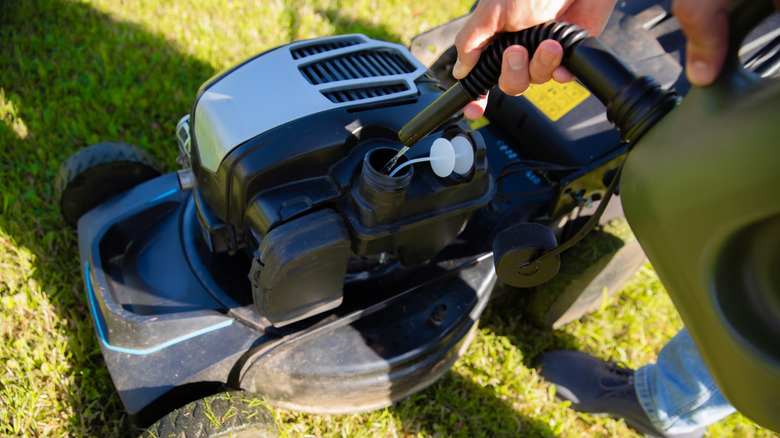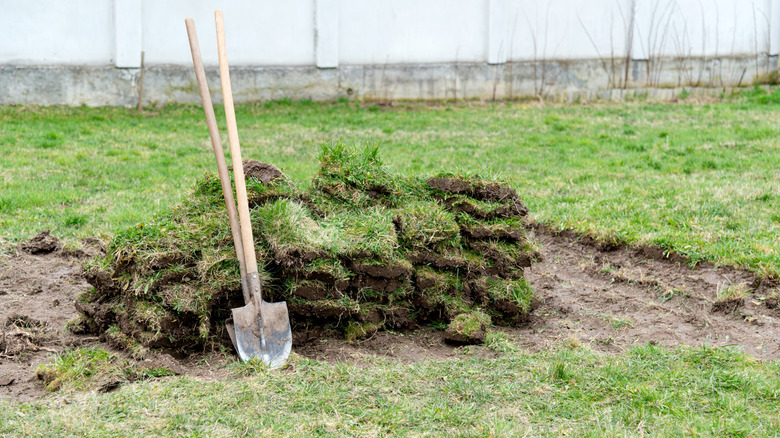What To Do If You Spill Gas On Your Lawn
While going electric is certainly the eco-friendly option, gas lawn mowers are still commonly used due to their power and ability to tackle larger pieces of land, as well as their overall reliability. These are certainly important benefits to consider when choosing between gas and battery-powered lawn mowers. Nevertheless, as with anything powered by gasoline, gas-powered lawn equipment can still pose some risks and downsides. Aside from negative impacts on human health and the environment, it's also possible for gasoline leaks to occur on your lawn. The type of action needed to address this issue depends on both the cause and size of the leak, with larger gas spills on your lawn possibly requiring soil and sod replacement.
When gas spills on your lawn, you might not necessarily notice it happening until you see the effects on your grass. To that end, if you see dark spots on your grass, or perhaps even dead spots in your lawn that seemingly developed suddenly and with no explanation, these could be attributed to gasoline from lawn equipment. You can also confirm that it's gas on your lawn if you catch a whiff of gasoline residue in the areas of dead grass. Leaking lawn equipment is a common cause of these spots, and is an issue that should be addressed right away to prevent future spills. Refilling your lawn equipment with gasoline can also cause an overflow that spills on your grass. Whatever the cause, it's important to determine whether you need to treat your lawn after gasoline spills on it. Otherwise, you might be left with unsightly dead spots.
How to treat and prevent gas spills on your lawn
If you see signs of gas spills on your lawn, it's important to first determine how the spill happened. Assess all gas-powered lawn equipment that you might have, and look for any signs of possible dried liquids underneath them. On the other hand, if a lawn maintenance company cuts your grass, you should consider reaching out to them directly so they can inspect both their equipment and your lawn. Finally, it's important to never overfill your lawn equipment with gasoline, as the product can flow out of the reservoir. You can look into ways to prevent spills when putting gas in your lawn mower to help reduce such risks. For safety, always fill your lawn equipment on surfaces like your driveway instead.
Aside from addressing the source of the spill, you will also need to determine what to do about your damaged lawn. Small spots that are confined to one spot of your yard may not necessarily need any action, especially if the leak didn't reach the soil. Some lawn care experts recommend using activated charcoal on small spills involving less than 5 ounces of gasoline. However, if any gas or oil leak is widespread across your lawn, the product has likely damaged a large portion of the turf and soil. At this point, you may need to replace the affected areas altogether, as grass may no longer be able to grow there. Wait for the affected area to die, then remove both the turf and the affected soil layer. You can use a soil plug to determine how far down the gas penetrated. Next, replace with fresh soil and reseed. Of course, you can reach out to a lawn care professional if you're unsure.

